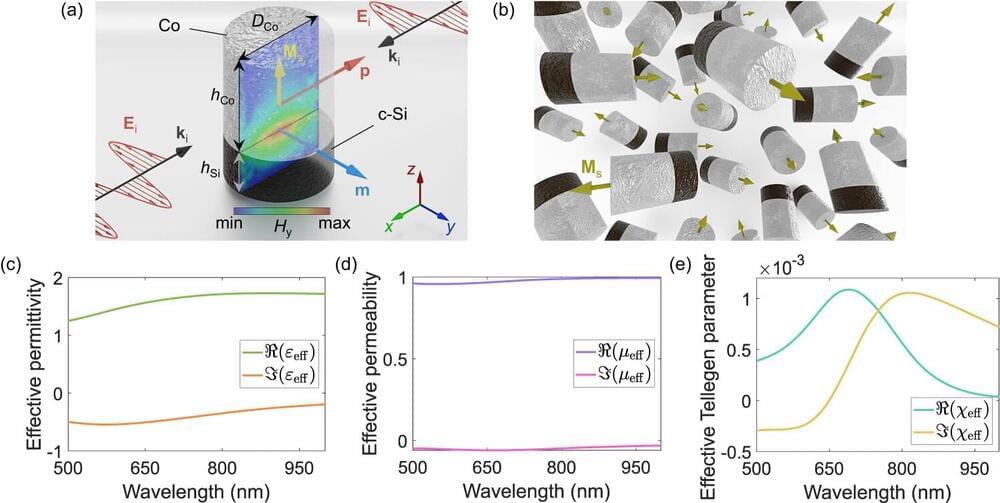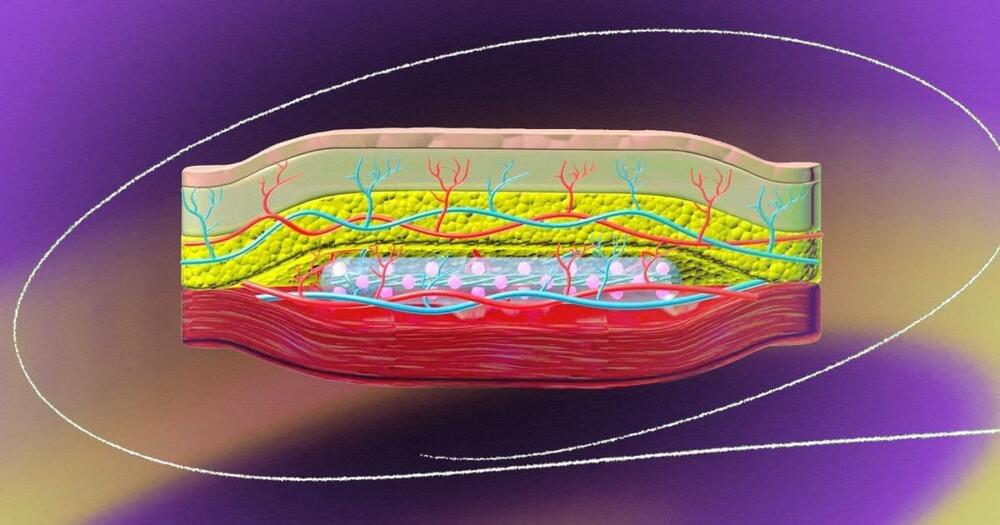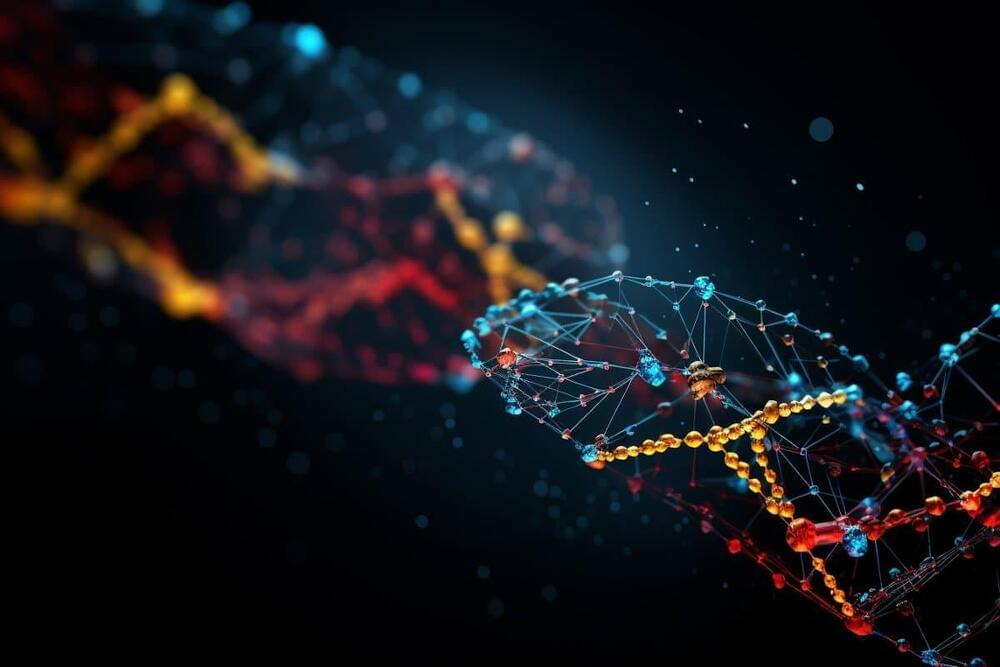Feb 15, 2024
A new optical metamaterial makes true one-way glass possible
Posted by Shailesh Prasad in category: materials
A new approach has allowed researchers at Aalto University to create a kind of metamaterial that has so far been beyond the reach of existing technologies. Unlike natural materials, metamaterials and metasurfaces can be tailored to have specific electromagnetic properties, which means scientists can create materials with features desirable for industrial applications.
The new metamaterial takes advantage of the nonreciprocal magnetoelectric (NME) effect. The NME effect implies a link between specific properties of the material (its magnetization and polarization) and the different field components of light or other electromagnetic waves. The NME effect is negligible in natural materials, but scientists have been trying to enhance it using metamaterials and metasurfaces because of the technological potential this would unlock.
The work is published in the journal Nature Communications.

















